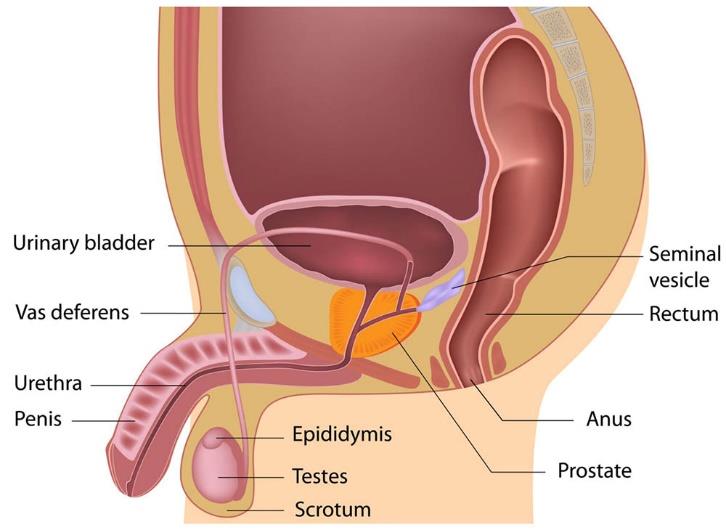Joseph R. Anticaglia MD
Medical Advisory Board
The United States Supreme Court in June of 2022 overturned Roe v. Wade and a woman’s choice concerning abortion. Subsequent to the Court’s “Dobbs” decision, over the past six months there has been an increase in requests for information about vasectomy, as well as an uptick in the number of vasectomies.
Traditional Vasectomy (Scalpel)
Each year 500,000 men head to a doctor’s office, or outpatient clinic to undergo a vasectomy. It is a permanent form of birth control that’s highly effective. It’s an outpatient surgical procedure intended to prevent pregnancy by stopping sperm from leaving a man’s penis during ejaculation. The surgery is done using a local anesthetic.
One approach involves numbing the scrotal area and the doctor making a small incision in the scrotum. Next, one identifies, cuts, ties and separates the cut ends of the vas deferens. The vas deferens are two small tubes originating in the testicles that carry sperm towards the penis. This procedure blocks sperm from reaching the penis. The incision is closed with sutures, or surgical glue. The operation usually takes less than 25 minutes to perform and the patient goes home the same day.
No Scalpel Vasectomy entails numbing the scrotal area, making a small puncture into the skin, identifying and exposing the vas deferens and proceed using the same technique as in the traditional vasectomy.
Post-Op
After surgery you may experience pain, acetaminophen is usually sufficient to control the pain. Applying ice packs on and off to the surgical area for several hours after the procedure cuts down on swelling and bruising. Support underwear may also alleviate swelling and bruising. Avoid heavy lifting and strenuous exercises for 7 to 10 days after surgery.
When you resume intercourse, use contraceptive precautions until your semen tests negative. The procedure doesn’t produce immediate sterility. Infection, fever, bleeding or hematoma (clotted blood within the scrotum) necessitates a call to your doctor.
Matters of Concerns
Preoperatively people have many questions. The procedure doesn’t affect your sex drive (libido), or your ability to reach orgasm. There’s not an increased risk to develop prostate cancer or heart disease. It does not protect you against sexually transmitted diseases. A vasectomy can sometimes be reversed, but it is generally permanent. The operation doesn’t stop the production of seminal fluid which is produced by the prostate gland and seminal vesicles; but a vasectomy does block sperm from reaching the seminal fluid.
A vasectomy doesn’t offer immediate sterility, as noted. It can take three months to obtain the desired outcome. At three months, and after approximately twenty ejaculations so that sperm is flushed out of the vas deferens, your doctor will ask you for a semen sample to see if there are any healthy sperm in it. The vasectomy is considered a success when no healthy sperm can be identified in the semen. Meanwhile, use other methods of contraception to prevent becoming a parent.

Male Reproductive System
A man’s fertility depends on the normal functioning of his reproductive system. This system consists of external and internal organs. Outside the body are the penis, scrotum, testicles and epididymis. Internally are the vas deferens, urethra, prostate and seminal vesicles.
The testicles produce sperm which is stored in the epididymis. When the vas deferens, leave the testicles under normal circumstances, it transports sperm along with seminal fluid to the urethra which is located within the penis. The urethra is a conduit, a passageway for sperm and urine.
When a male is sexually stimulated, the prostate gland, and the seminal vesicles make a whitish fluid called seminal fluid, which when mixed with sperm forms semen. During ejaculation, the vas deferens propels the semen towards, through and out of the urethra. In the midst of intercourse, the sperm can meet and fertilize a woman’s egg.
However, a vasectomy blocks the sperm from mingling with the seminal fluid. As a consequence, the seminal fluid is travelling without sperm to the urethra and when the male ejaculates, he cannot impregnate a woman; he’s “firing blanks.”
Second Thoughts
A vasectomy cuts the vas deferens and is designed to be a permanent form of male contraception. Experts say, there aren’t any significant risks associated with this procedure. At times, men have second thoughts after having undergone a vasectomy. The options for fertility after such surgery are not always successful.
One option is vasectomy reversal, which is surgery to connect each vas deferens, so that once again, healthy sperm move from the testicles to the penis. Another option is sperm retrieval, which is used as part of in vitro fertilization. Before having a vasectomy, many caution, be certain you do not want to have children.
References
- Sharlip ID, et al; Vasectomy (2015); American Urological Association guideline, J Urol 2012, Amended 2015
- Planned Parenthood; What are the parts of the male sexual anatomy?
- M David Stockton MD; No Scalpel Vasectomy; Medscape, May 6, 2021
- Paul Turek, MD; Spermatogenesis
- Dobbs v. Jackson Women’s Health; June 24, 2022
Glossary
Male Spermatogenesis
A man’s fertility, and sexual characteristics depend on the normal functioning of the male reproductive system, spinal cord and brain hormones. “The hypothalamus secretes gonadotropin releasing hormone (GnRH) which acts on the anterior pituitary gland stimulating it to release follicle stimulating hormone (FSH), and leutinizing hormone (LH).” Paul Turek, MD
This article is intended solely as a learning experience. Please consult your physician for diagnostic and treatment options.

